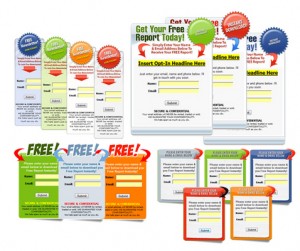Have you ever watched tv at certain times during a day and wondered why the commercials you see are so different than what you see at night? Or how about a magazine about cars–why are all the ads related to car parts? Of course the second example is more obvious, but the point is that every media outlet has demographic requirements that it must follow.
 Your website is no exception. There’s no sense in promoting your products and services to people who have no interest in using them. Learning your demographics for your niche or market will help you find people in particular age groups, cultural societies and various interests groups that fit your ideal customer. Knowing this information will help you better serve your customers and allow you to market specific segments of your business. The hard (and expensive) part is finding out who your customers really are.
Your website is no exception. There’s no sense in promoting your products and services to people who have no interest in using them. Learning your demographics for your niche or market will help you find people in particular age groups, cultural societies and various interests groups that fit your ideal customer. Knowing this information will help you better serve your customers and allow you to market specific segments of your business. The hard (and expensive) part is finding out who your customers really are.
As a small business or even smaller website/blog owner, you will likely not be able to afford a big budget market research campaign, so what options are you left with in discovering who your customers are? I found an interesting blog post on Sean Jordan’s website that discusses just this question. I’ve outlined and summarized a few of the important points here.
Finding your demographic
- Competitors – A perfect way to start out with any area of your new business is to look at what your competitors are doing. It might sting a little to see other businesses doing what you plan to do, but the best part is that you can learn from their mistakes or take the high road and do things better/differently. In terms of demographics, you can sometimes find this information in media press kits or by searching online.
- Census Bureau – To find your own demographics, it might help to view the demographics of the country, or your local area. This will tell you who lives around your business and can point you in the right direction to finding out who you’ll be marketing to.
- The Internet – Searching online can yield tons of information about loca demographics. A lot of real estate websites offer basic information to inform potential home buyers. There’s a website called Claritas that allows you to search your own zip code to discover what kind of demographics there are in your neighborhood.
- Small Business Administration – This website is not just for locating demographic information, but also for starting a new business or growing an existing one. There is a TON of free resources on this site and it should be explored from top to bottom.
- Existing reports – Most likely, you’re operating in an industry or field that already has some extensive market research reports already created, so why not use them? This will save you so much time and possibly even money in the long term although these reports can cost quite a bit up front.
- Hire someone – Undoubtedly this is the most expensive approach to market research. You hire a large firm that specializes in such areas and allow them to do the footwork for you. This option is probably not the best approach for a small business because even once you have the results, you may not have the financial requirements to properly manage your marketing campaigns.
Why is this information important?
As an example, your business sells computer games. If you found out that the majority of people buying computer games are between the ages of 13-26, but your local demographics show you that the majority of people in your area are between the ages of 35-55, would you go door to door offering to sell computer games? No. Had you not known this information, you would have exhausted precious time and resources to gain no additional customers.
Running a business online is a little different because you have the whole world at your fingertips, but it would still be beneficial to know how to market your website to get better response to your products.
This has been an extremely concise article about locating demographics, but my purpose was to emphasize how important it is to know your customers. If you’re faced with this issue right now in your business, I’d strongly suggest you begin a search online to explore these topics in depth.
| << Back to Opt In Capture | Forward to Cookie Tracking >> |
 you get the chance, but don’t force it in your visitors’ faces. You may have seen websites that throw out popup or popunder windows and you already know how annoying these are.
you get the chance, but don’t force it in your visitors’ faces. You may have seen websites that throw out popup or popunder windows and you already know how annoying these are.